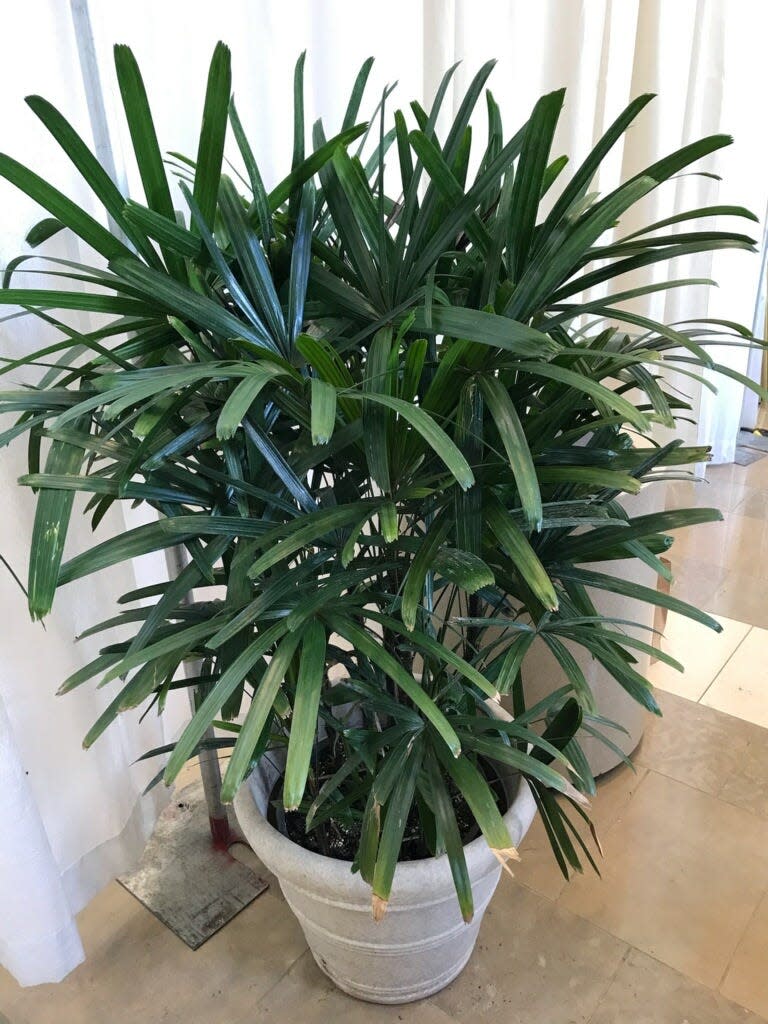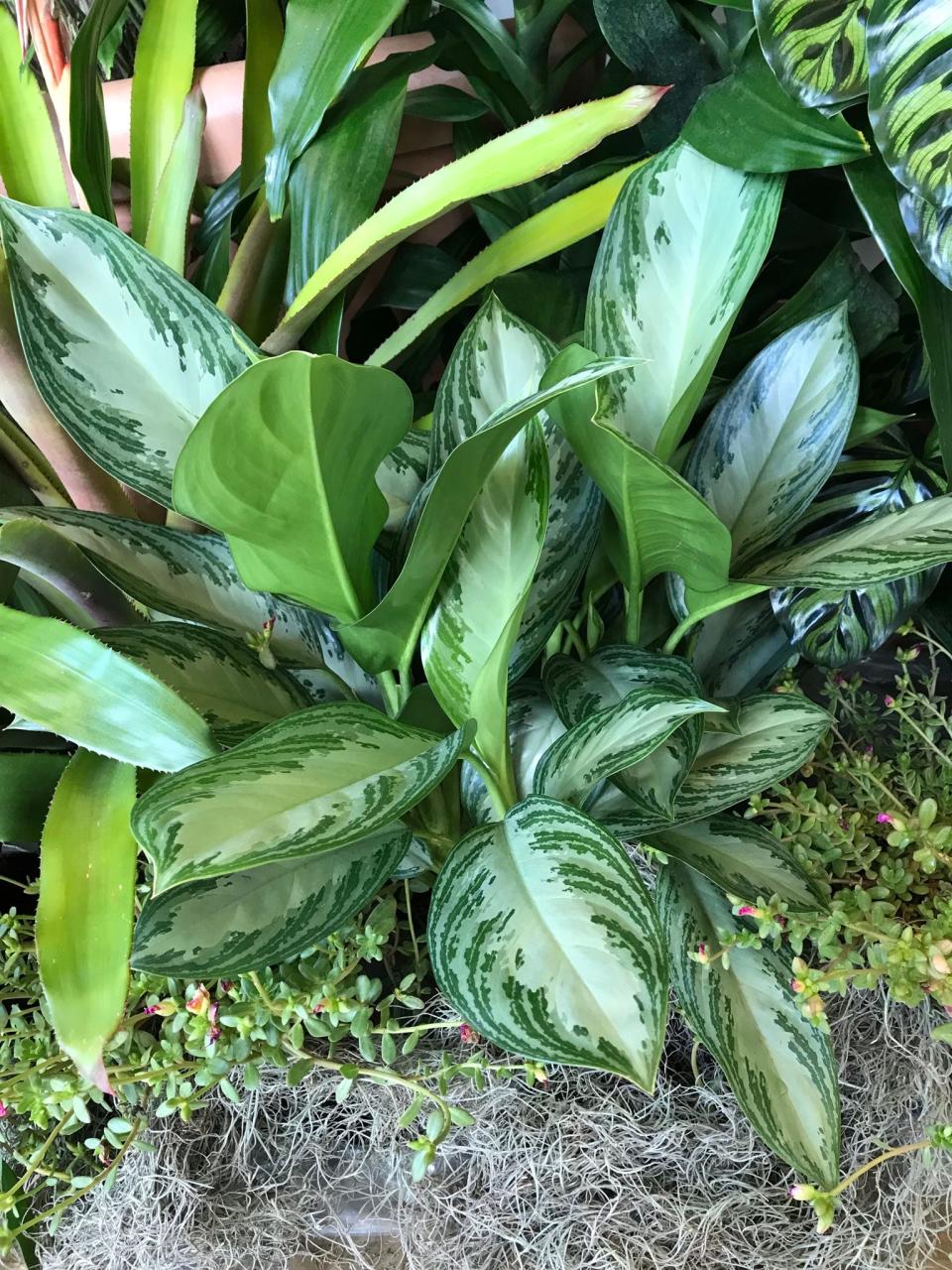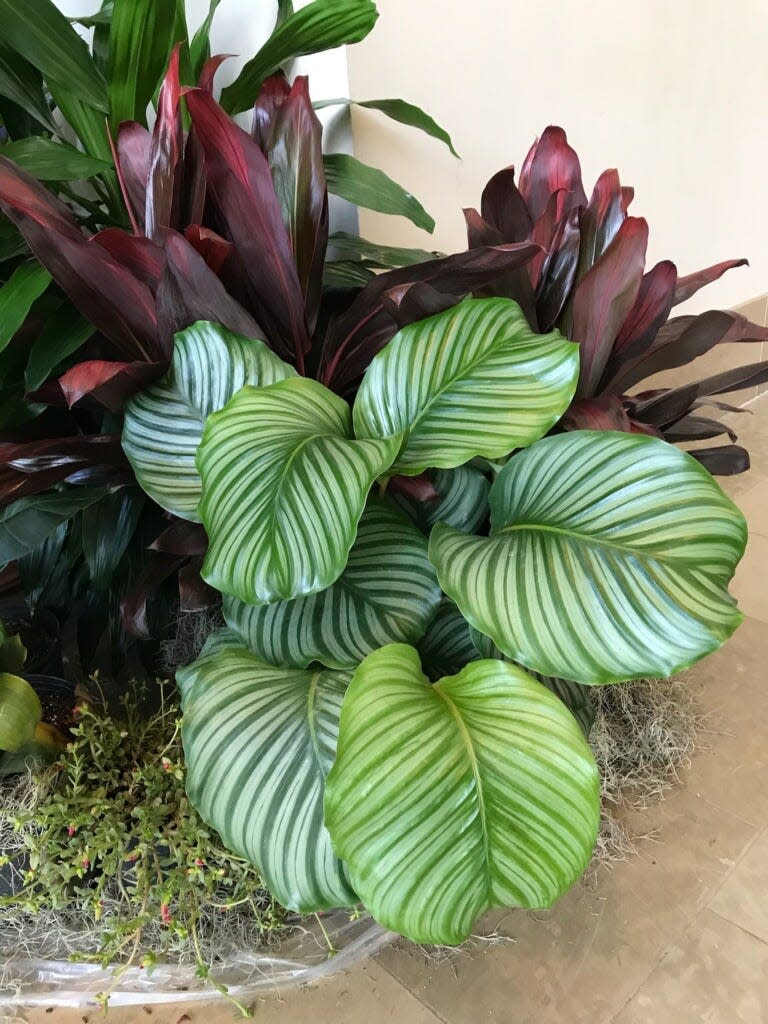From the Extension: Indoor plants can be fun and brighten up any space
UF/IFAS Extension recently hosted the National Association of County Agriculture Agents annual meeting in South Florida. While at the convention center, I walked the halls and was completely enamored with the interior landscaping designs created by the Palm Beach Florida Nursery Growers and Landscape Association.
More From the Extension: Florida-friendly alternative to native landscape plants
Look to roselle: New crop on the block
Purples, pinks, and all shades and patterns of greens stood out in the large, brightly lit exhibit halls. After spending a week immersed in tropical foliage, I am inspired to try a larger variety of tropical foliage plants in my own home.
Indoor plants require bright light and moist but not saturated soil conditions. Many indoor spaces may not provide enough light for healthy plant growth. This can be remedied by adding artificial lights or only growing plants in brightly lit rooms. Light is measured in footcandles (FTC).

According to the University of Florida, on a bright, sunny day outdoors in the winter, light measures about 4,000 FTC, while in a home away from windows, light can be less than 10 FTC. You can determine light levels in your home by measuring with a light meter or estimate light levels by using a light meter phone app. Yes, there is even an app for that!
Most houseplants require moist but well-drained soil. For many plants, this means allowing the top of the soil to dry to the touch before watering again. Do the “feel test” before watering by sticking your finger in the soil to your second knuckle. If it feels dry, water. If the soil is moist, resist the urge.
With a great variety of houseplants to choose from, you will be able to find one to brighten your space. My favorites include calathea, silver queen aglaonema, and lady palm. With its bold stripes and dark patches of color, calathea enlivens a space and demands attention. The shape and color pattern of the leaves varies greatly among species.
For example, Calathea orbifolia boasts large rounded, glossy leaves, while Calathea lancifolia’s leaves are more straplike and brighter in color. Calatheas require bright filtered light and will be scalded by the sun if placed in direct light.
Place them in a brightly lit room, keep the soil moist, but allow the plant to dry slightly between waterings. Calathea can also benefit from added humidity with a quick mist from a spray bottle once a day.

Another bonus is that most calatheas are not toxic to pets, according to the American Society for the Prevention of Cruelty to Animals (ASPCA). ASPCA has an online searchable list of non-toxic and toxic plants for pets. Search for “ASPCA non-toxic and toxic plants” in your internet browser to access the list.
Silver queen aglaonema showcases broad, tropical foliage with a silvery green midvein and dark green outer markings. It performs well in low light levels and grows into a wide two-foot-tall plant. Do not allow this plant to dry out between waterings completely, and make sure to dust its leaves occasionally. Aglaonema is toxic to pets, so you may want to exclude this plant from your home if you have four-legged family members.
If looking for an upright palm, select lady palm for its tolerance of indoor conditions. Lady palm, Rhapis excelsa, received its name because the leaves look like the outstretched hand of a lady. This small palm needs a brightly lit room and can grow outdoors in shady conditions. Lady palm needs a large container as it can reach heights of 7 feet at maturity.

Create a tropical oasis in your home by grouping houseplants in several matching containers. To learn more about how you can bring the outdoors inside by growing houseplants visit gardeningsolutions.ifas.ufl.edu.
Extension programs are open to all persons regardless of race, color, sex, age, disability, religion, or national origin.
Brooke Moffis is the Commercial Horticulture and FL Friendly Landscaping Agent of UF/IFAS Extension Lake County. Email her at burnb48@ufl.edu.
This article originally appeared on Daily Commercial: Indoor plants can be fun and brighten up any space

